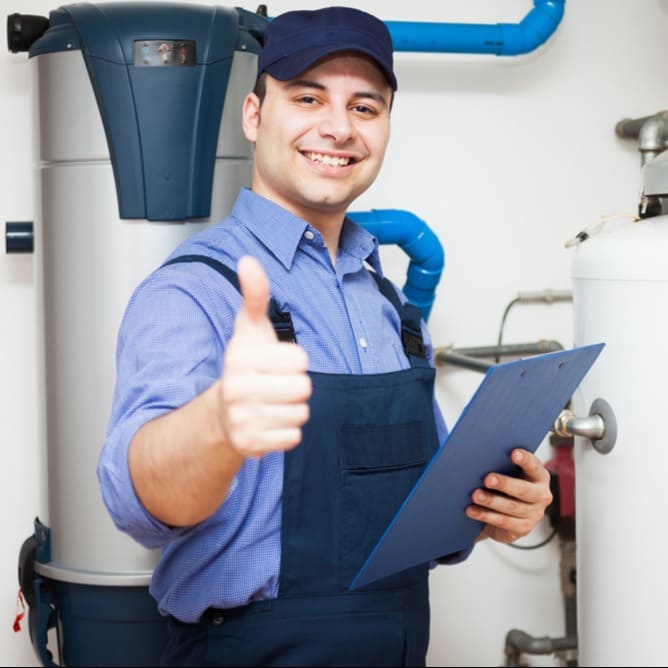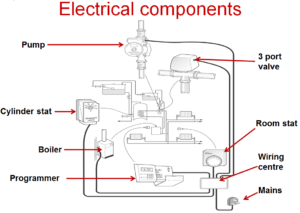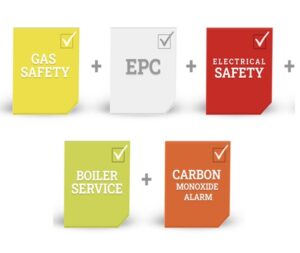
Gas Boiler Servicing Bolton
At First Response 360 we strongly recommend getting your boiler serviced annually as it allows you to pick up on any problems before they escalate into costly repairs.
Ensuring your boiler is serviced annually is crucial to maintaining the efficiency of your heating system. This way you can prevent costly problems from occurring due to low maintenance. It is also a requirement of all manufacturers where a warranty is in effect.
First Response 360 offers professional boiler servicing in Bolton. Our Gas Safe registered engineers can provide a boiler service for all domestic gas boilers, including Vaillant, Worcester, Ideal, Baxi, Potterton, Alpha, Glow Worm, and more.

Reliable Boiler Repair in Bolton
Trusted Local Experts for Faulty Boiler Diagnosis and Repair
Is your boiler broken down or acting up? Don’t freeze this winter – get in touch with First Response 360, Bolton’s leading boiler repair specialists. With over a decade of experience, our Gas Safe registered engineers have the expertise to accurately diagnose any boiler fault and carry out professional repairs.
Emergency Call-Outs and Fast Response
If you have no heating or hot water due to a faulty boiler, call us right away. We provide 24/7 emergency boiler repair in Bolton with rapid response times. Within hours, we’ll have an engineer at your door ready to get your system up and running again.
All Boiler Makes and Models
We repair all major boiler makes and models including Worcester Bosch, Vailant, Baxi, Ideal and more. Our engineers are manufacturer trained and will have the parts ready in their van to fix your boiler promptly.
Exceptional Reviews and Affordable Pricing
With outstanding reviews and affordable pricing, First Response 360 is the number one choice for boiler repairs in Bolton. We won’t charge over the odds or try and push boiler replacements when unnecessary. Get an upfront fixed quote with transparent pricing.
Don’t suffer through cold winter nights with a faulty boiler. For professional repairs from a trusted local company, call First Response 360 on 07968 039 148 today.
While there are plenty of tips on how to look after your boiler yourself, it’s essential to call in the professionals once annually for a variety of safety reasons. In addition, having your boiler serviced can save you money in the long run, by identifying any potential problems early before they cause costly damage.
What will we check for?
At First Response 360 boiler service includes:
- Visual boiler inspection to ensure the boiler meets national standards
- Removing boiler casing to check internal components and clean the inside of the boiler
- Gas pressure check
- Flue check
- Check for any existing faults
Our highly qualified Gas Safe engineers in Bolton will ensure your heating system is working effectively and efficiently, ensuring that any potential problems are spotted and the appropriate preventative maintenance is carried out.
Book Your Boiler Service Today!
If you’ve been putting off calling your local heating engineer to book a boiler service in Bolton, remember that a professional offers their experience for your benefit. Ultimately, having your boiler serviced can help to recognise any faults which might worsen, keep boilers running efficiently and reduce energy bills, along with keeping your warranty valid. Our heating engineers can also spot carbon monoxide leaks, which put the lives of the people living in your home in danger.
Call our Bolton engineers today at 07968 039 148 for reliable boiler servicing.
Request a quote for boiler servicing
Accounts
Free Trial
Projects
SSL
Storage
Domains
Sub-domains
Your Text
Your Text
Boiler Service
£75
+VAT
Boiler Controls
Free Carbon Monoxide Test
Safety devices
Boiler Seals
Internal Main Components
Water and gas pipeworks
Flue and Combustion Check
Gas Safety Certificate (CP12)
£75
+VAT
Boiler Controls
Free Carbon Monoxide Test
Gas Hob / Cooker
Gas Fire Check
Gas Tightness Test
Safety devices
Boiler Seals
Flue and Combustion Check
Boiler Service & CP12
£85
+VAT
Boiler Controls
Free Carbon Monoxide Alarm
Gas Hob / Cooker
Gas Fire Check
Gas Tightness Test
Safety devices
Boiler Seals
Flue and Combustion Check
Accounts
Free Trial
Projects
SSL
Storage
Domains
Sub-domains
Your Text
Your Text
Your Text
Electrical Installation Condition Report (EICR)
£150
+VAT
Consumer Unit (main fuse board)
Socket & Plugs
Light Fitting & Light Switches
Electrical Cables or Leads
Earthing and bonding
Extension leads
Kitchen Safety
Bathroom Safety
Visible signs of burning / scorching
RCD Protection around the home
Carbon Monoxide Detectors Installations
£60
+VAT
Carbon Monoxide Detector
Product Life : 10 years
Battery : AA batteries included
LED Status display
CE Marked
Energy Performance Certificate EPC
£90
+VAT
Size of your living space
Construction of your house
Any insulation
Lighting
Heating system and controls
Frequently Asked Questions
Yes, our emergency boiler repair service operates 24/7. No matter what day of the week, we can have an engineer at your property within hours to get your heating and hot water working again.
We provide boiler repairs in all areas of Bolton and the surrounding region including Horwich, Westhoughton, Farnworth, Walkden and more. Wherever you’re located, we’ve got you covered.
Even older boilers can often be repaired cost-effectively. Our engineers will advise if a repair is worthwhile or if it would be safer and more economical to replace your boiler.
No. We provide free call outs and quotes in Bolton so you only pay for the repair work needed with no hidden fees.
For minor boiler faults, we can usually complete repairs within the same day. More complex issues may require ordering special parts which we will try to source as fast as possible. If you have any other questions, please call our friendly team on 07968 039 148.
Pilot light going out – the most common reason for this happening is a faulty thermocouple. It can also be caused by damaged seals. The thermocouple: It is the sensor that sits in the pilot light flame
Losing pressure – if you have a pressurised system, you may notice it keeps losing pressure. This may be due to a water leak or expansion vessel failure causing damage to the pressure relief valve.
- Check on the pressure gauge that the water pressure is at least 1 bar
- Check the outside warning pipe if water is leaking once the system is pressurised
Radiators not hot – this can be due to a number of reasons and is one of the top boiler faults. If the radiator is hot at the bottom but not at the top, this may be because there is air in the radiator. You can rectify this easily by bleeding the radiator. If it is not because of air, it may be due to a broken pump i.e. hot water is not being circulated to the radiators or a build-up of corrosion in the pipes which may require a power flush to rectify.
No heat or hot water – potential causes include broken diaphragms and airlocks, failure of motorised valves, issues with the thermostat or low water levels.
Leaking and dripping – a variety of issues could cause your boiler to leak water. It will depend on where the water is leaking from to determine the cause.
Strange banging, whistling or gurgling noises. This occurs when high-pressure water is travelling through a tap or a ball valve and, while running can cause a loud whining noise. Also, when the valve or tap is turned off, fast-moving water comes to an abrupt stop, causing a shock wave through the pipe work resulting in a loud bang. –, alternatively, it could be that the water pressure is too low or it’s kettling
Frozen condensate pipe – Thawing a frozen condensate pipe should ideally be done by a qualified engineer.
Thermostat issues – if the thermostat is losing accuracy or turning the heating on/off when it’s not supposed to it might be time to invest in a newer, more energy efficient one. This could be due to a faulty thermostat
Kettling – hearing a strange rumbling noise? When lime scale builds up on your boiler’s heat exchange you get kettling.
No central heating or hot water
- Check pilot light, make sure the light is lit.
- Check that the central heating programmer is set to “on”. It may have been turned off in error.
- Check that the thermostats are turned up to the correct level.
Check that the electricity supply is switched on and that the central heating fuse has not blown. If both are fine but the programmer is not receiving power, there may be a loose connection
If a motorised valve is fitted (to control the flow of hot water from the boiler), slide the manual lever to open it. If there is resistance, the valve is not opening properly. This could indicate a burnt-out motor.
If the pump isn’t working, you can try to start it manually. Turn off the central heating system and wait until the pump is cold. Remove the screw in the middle of the pump and turn the impeller (the pump’s manual starter). On some models, this is a small screw that is turned with a screwdriver. On others, there is a small handle attached. If this doesn’t work, try tapping the pump casing sharply, but gently, with a mallet 2 or 3 times, or remove the pump, and flush clean water through it with a hosepipe. Do not submerge it in water. If none of this works, replace the pump.
If the pump is running, but the boiler does not light, check that the pilot light is on and that the gas supply is turned on at the meter
If a combination boiler will not light, check on the pressure gauge that the water pressure is at least 1 bar
Radiators NOT getting hot when the heating is turned ON:
Sometimes pump failure, sometimes failure of the motor in the motorised valve. With pump failure, sometimes the upstairs radiators will continue to heat up by natural convection leaving just the downstairs rads cold.
If the central heating is working but there is no hot water
Check that the thermostat is set to 60°C.
If you have a motorised valve, check that it is open. If it won’t open, you’ll have to call a heating engineer.
If you have an air release valve by your hot water cylinder, it may need bleeding. You should find the valve on the pipe, which enters the heating coil.
No Hot Water or Central Heating
First check that the programmer is set to ‘on’. This may seem really obvious but it can turn off by mistake.
Check the temperature is set higher than the current temperature of the house. If it is lower, it will switch off.
Take a look to see whether the heating pressure is set to the correct setting. If you’re not sure, check the manufacturer’s instructions and set it to the recommended pressure setting.
If your cylinder has a motorised valve, you’ll need to check whether it’s working properly, as this could help you diagnose the problem. You can check whether the valve is opening by sliding the manual lever. If there is any resistance, the valve is not opening automatically. In this situation, you’ll have to call a heating engineer.
If the upstairs radiators are hot but the downstairs radiators are cold
This is probably due to a jammed pump.
If the downstairs radiators are hot but the upstairs ones are cold
Check that there is water in the feed-and-expansion cistern. If it is empty, the ball valve has probably jammed. Bleed the air from the system.
Radiators getting hot when the heating is turned off?
Water intended for the hot water circuit can leak past into the radiator circuit, making the radiators warm even though the heating is turned off.
Whichever reason is causing the radiators to get hot, a drain-down is required to allow replacement of the faulty component, but there is no reason not to cope with the problem by turning off the radiators that are getting hot. No harm will be done.
Showers
There are many manufacturers and shower types on the market today. They can mainly be divided into three areas:
Gravity showers – Rely on the head of water in the storage tank to push the water out of the shower Pumped showers – Use an additional pump to force water out of the shower head.
Electric showers – Rely on mains’ water pressure to push the water through the shower head.
Expansion noise: This occurs in hot water or central heating pipework. As heated water passes through the pipes, it expands and the pipework creaks. The same happens as the pipes cool.
- Inspect clips/brackets
- Inspect notching
- Inspect insulation and padding
Water hammer: This can be a common complaint when the CWSC is refilling after hot water has been used. Either a juddering sound is vibrated in the pipework as the FOV shuts off, or the FOV shuts off suddenly sending a shock wave down the pipework.
- Inspect FOV and tap washer
- Install flow restrictor
- Change to an equilibrium valve
- Inspect clipping distances
Thermostat failure: The hot water temperature will be affected. If the stat fails open, the customer will have no hot water; if it fails closed, the temperature will continue to rise, potentially to dangerous levels.
The customer will notice both faults but these will need to be inspected carefully.
Indicator: No hot water; hot water too hot; cold water warming up; steam in loft area; open vent discharging.
- Replace cylinder stat
Immersion element: failure: In a direct cylinder the customer will have no hot water, in an indirect cylinder the customer may not know until they need a backup heat source.
Indicator: No hot water; fuse blowing; MCB tripping
Failure of coil: If the coil fails, the pressure from the CWSC is slightly greater than the pressure from the F&E cistern. This means water is forced into the primary system and will cause the warning pipe on the F&E to discharge. Also, the hot water may be slightly discoloured when drawn off. Indicator: F&E overflow dripping; hot water discoloured.
- Replace cylinder with a current approved part L cylinder
Loss of air bubble: This will only occur in a single feed cylinder or certain unvented cylinders. With the single feed cylinder, the hot water will be discoloured when drawn off. With the unvented cylinder, the pressure relief valve will discharge when the water is heated.
- In both cases the secondary system will need draining to the base of the hot water cylinder
- Then the system can be refilled, which will reinstate the air bubble
Water boiling: This should be evident to a customer, with steam in the loft area, the open vent discharging and water dangerously hot when drawn off.
This occurred when old immersion heater thermostats failed with the element still powered. If older immersions are found they need to be replaced with new immersions that contain a non-self-resetting thermal cut-out.
If a cylinder stat fails, the water will continue to heat but will then be controlled by the boiler stat, which should cut out at approximately 80-850C.
Cold water warming up
This can happen due to the hot and cold water pipes being too close together and so the heat from the hot water pipe transfers over to the cold water pipe. Hot water pipes should be installed above cold water pipes to avoid this transfer of heat, and insulated to avoid heat loss. As already mentioned, if the hot water cylinder overheats, the vent pipe discharges into the CWSC and this can also warm the cold water up. The hot pipe should be above the cold pipework, and if there is any possibility of heat transfer the pipe should be insulated.
Airlocks
This generally occurs in low-pressure systems, when the pipework is not installed correctly, and it can be a constant nuisance especially when commissioning. A common situation is when horizontal pipework slightly rises, allowing air to be trapped and water pressure is too low to push the air out of place. Indicator: No flow of water or intermittent water flow.
- Install pipework correctly
Blockages
These generally occur due to debris in the system and will affect the flow rate at draw-off points. At the commissioning stage, the system will need to be flushed out to remove any debris.
Limescale
This is very apparent in hard water areas and can cause blockages, jam components, reduce efficiency and cause unsightly build-ups. Sometimes most noticeable on shower heads where the flow rate from the rose reduces over time.
Indicators: Reduced water flow; build-ups on draw-off points; stiff valves.
- Install a water softener or install a scale inhibitor
Temporary hard water
Can cause maintenance problems in plumbing systems. If hard water is heated above 650C, it loses its calcium and limescale is formed. Look at the inside of the kettle.
- The limescale insulates the water from the heat source
- The limescale can cause blockages
- Ideally, hard water needs to be treated before it enters a domestic water system.
There are instances when warm water comes out of cold taps
- A hot pipe touching a cold pipe
- The hot pipe has been installed below a cold pipe
Both these situations relate to heat gain: a cold pipe should always be installed below a hot pipe to prevent heat gain.
Under-sink pipes
The kitchen sink might be the most commonly used area of plumbing in the home, so it makes sense that it’s a common area for problems. The pipes under the sink, often doubling as a kitchen storage area, can often play suspect to leaks.
Often, this is caused by the pipe being knocked out of place. Usually tightening the affected area will solve the problem. In the case of extreme damage or scrapes, where an actual hole in a piece of pipe is causing leakage, the pipe may need to be replaced.
Blocked pipes
Blocked pipes can cause water to drain annoyingly slowly down the sink or even prevent it moving completely. In bathrooms, drains usually become blocked by hair or shampoo and other bathing products; in kitchens, scraps of food and cooking oil are the main culprits
Water softener (or Base Exchange unit)
The only true way to totally prevent scale, scum and tide marks is to fit a water softener.
This is a process where water is taken through a zeolite or resin bed before flowing out of the top of the vessel to the tap. The resin holds the calcium within the filter. The unit is then back-washed by a brine solution to allow the process to resume.
Balancing the system
- Open all the radiator valves on the system fully.
- Fire the boiler.
- Feel which radiator heats up first, mark it 1 and close the wheel head valve off.
- Feel for the second, third, fourth radiator etc until all the radiators have been marked in a sequence of heating.
- The final radiator to heat up and to be marked should be the index radiator.
Now count the number of full turns it takes to close the lock shield valve from the open position.
Divide the number of turns by the number of radiators, plus one installed in the system.
Eg: My system has 9 (9 + 1 = 10) radiators and the lock shield valve rotates 5 full turns
5 / 10 = half a turn
This is a rule-of-thumb method but shows the principle of Balancing the system Now fire the boiler up again and allow the system to warm up and reach temperature. Feel the radiators as they warm up.
They should be warming up uniformly. When the system is warm there should be a 100C temperature difference between the flow and return pipework. This can be measured by using clip-on thermometers or digitally.







